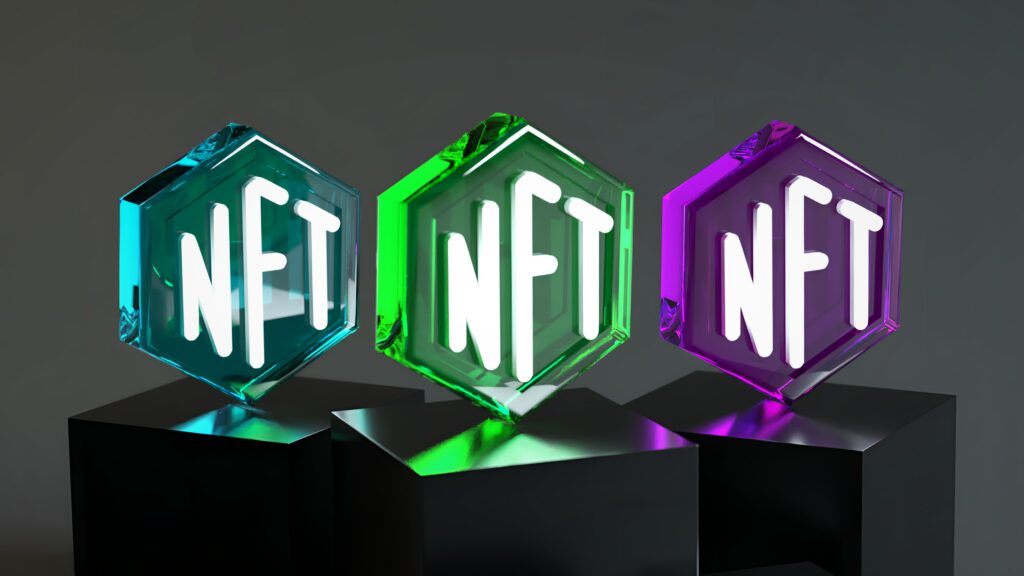Solana Vs Ethereum: Which Is The Better NFT Blockchain?

Speed? The ability to scale? Profit? These are all factors used to judge how great an NFT blockchain is. Between Ethereum and Solana blockchains, there’s been a long-running question of which one trumps the other.
But before we dive into all that, let’s back up a chapter – why Ethereum and Solana? Non Fungible Tokens (NFTs) rose to fame in the past few years, with the global NFT market valued at $11.3 billion in 2021. Ethereum has been the natural blockchain choice for NFTs, with a significant portion of current NFT projects built on the blockchain. Then came Solana with its smart contracts and other proof-of-stake functionalities to challenge the Ethereum network.
Today, Ethereum and Solana are two of the largest blockchains with decentralized finance (DeFi) projects and NFTs. But which blockchain should you choose for minting your NFTs? Is Ethereum best for NFTs? Is Solana good for NFTs? We’ll compare both networks to help you find out in this Solana Vs Ethereum guide. Now, let’s dive into the details!
Ethereum NFTs
If you’ve heard about cryptocurrency, then you probably know that Ethereum is a cryptocurrency, just like Bitcoin. The Ethereum blockchain also supports NFTs and today it’s home to many NFT projects and tokens that use the ERC-721 standard.
Each Ethereum NFT is unique and has an identifier directly connecting it to the Ethereum network through an address. Similarly, each token has a verifiable owner so they are not interchangeable. And the tokens are stored on the blockchain, so you can buy or sell them in NFT marketplaces like OpenSea.
But, Ethereum uses the proof-of-work (PoW) consensus mechanism to validate transactions on the network. Though the network is considered more secure, it processes only 20 transactions per second. And because PoW consumes a lot of energy and pays its network validators (miners) a commission, you spend a lot on transaction (gas) fees when you buy, sell, and mint NFTs on the Ethereum blockchain. At the same time, there are conversations about how Ethereum contributes to the world’s rising carbon footprint.
To solve these problems, Ethereum is upgrading its network and switching to proof-of-stake soon.
Solana NFTs
Solana is an open-source blockchain protocol that was designed to challenge the Ethereum network and solve scalability issues. It’s the second largest NFT blockchain and is known for its fast, secure and flexible network. As a result, several creators have chosen to launch their DeFi projects, NFTs and decentralized apps (dApps) through Solana instead of Ethereum.
Solana uses proof-of-stake and proof-of-history to validate its transactions. Instead of having miners, it prioritizes the use of smart contracts. As a result, transactions are faster on the Solana network and you pay less when you buy, sell and mint NFTs.
You can buy Solana NFTs on Solana-based marketplaces like Magic Eden or Solanart through your Solana wallet.
Solana Vs Ethereum: What Are The Differences?

Solana and Ethereum have their pros and cons. Here are some distinct differences to help you decide which network is best for NFTs:
Consensus Mechanism
As stated earlier, Ethereum uses a proof-of-work mechanism to manage its network, while Solana uses a combination of proof-of-stake and proof-of-history to validate its network transactions. Ethereum’s proof-of-work provides more security but has downsides like high fees and slower transaction time, while Solana charges way less and processes thousands of transactions per second.
Market Size
In terms of market size, Ethereum has a larger pool of NFT buyers and sellers than Solana. The higher trading volume makes it easier for NFT buyers and sellers to get more visibility and potentially sell faster. Also, Ethereum-based marketplaces like OpenSea dominate the NFT space, adding to the advantages of using Ethereum for NFTs. But with large numbers comes higher competition, so there’s also a vast amount of Ethereum NFTs without buyers.
Security
Another reason Ethereum is a fan favorite is because its data architecture and security components make it solid for DeFi and NFT projects. For example, hackers attacked the Solana network recently and reportedly stole millions of dollars, but Ethereum is older and hasn’t recorded any hacks in recent times.
Decentralization
The whole idea of DeFi and blockchain technology is to eliminate traditional systems where a person or group of people has more control than the majority. But this is still more evident with Solana – where people get more rewards when they stake more SOL tokens. Compared to Ethereum’s mining pools, where people have to work more to validate transactions and make money, Solana is more centralized.
Transaction Fees
Solana is popular for its low transaction fees and the difference is massive compared to Ethereum’s fees. It costs between $10 to $150 to mint one NFT on the Ethereum blockchain, excluding marketplace fees which range from 2.5% to 5% of the transaction cost. On the other hand, it costs between $0.04 to $0.12 to mint an NFT on the Solana network.
Solana Vs Ethereum: Which Blockchain Is The Best For NFTs?

Because Ethereum has been around longer and offers more security, many people consider it the more reliable network for NFTs and DeFi apps. But while Solana is younger, it offers significant benefits including high transaction speed and low fees.
Ethereum is also more popular and has more volume, so the network has more NFT buyers and sellers – this means that you could potentially make more money if you mint and sell NFTs on Ethereum. But if you’re new to NFTs and looking to cut costs, Solana is the better option because its fees are low.
At the end of the day, when comparing Solana vs Ethereum it’s essential to understand that both have their pros and cons. Solana is faster and cheaper while Ethereum is slower, more expensive, and more secure than Solana.
But with the Ethereum Merge (Ethereum 2.0) on the way, Ethereum could solve many issues related to fees, speed and environmental pollution through carbon emissions. It’s safe to say both networks will grow over time.
Featured image by PiggyBank on Unsplash: Which is the best NFT blockchain?
